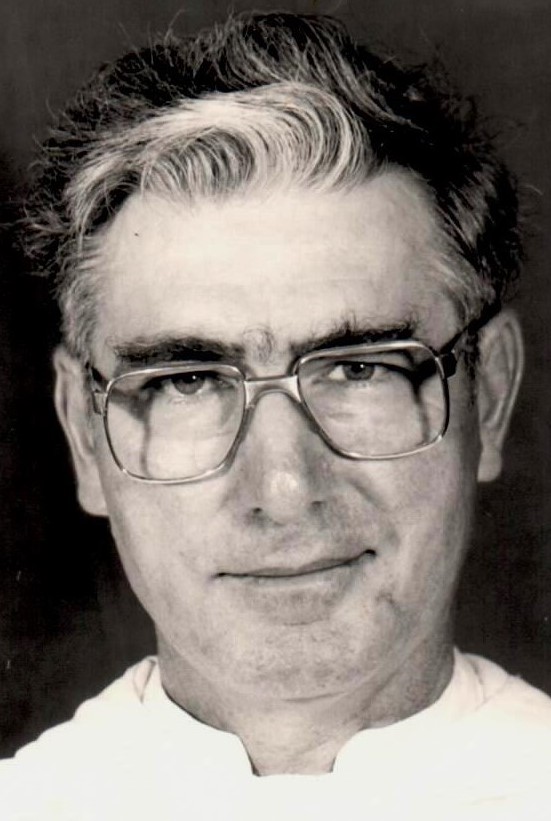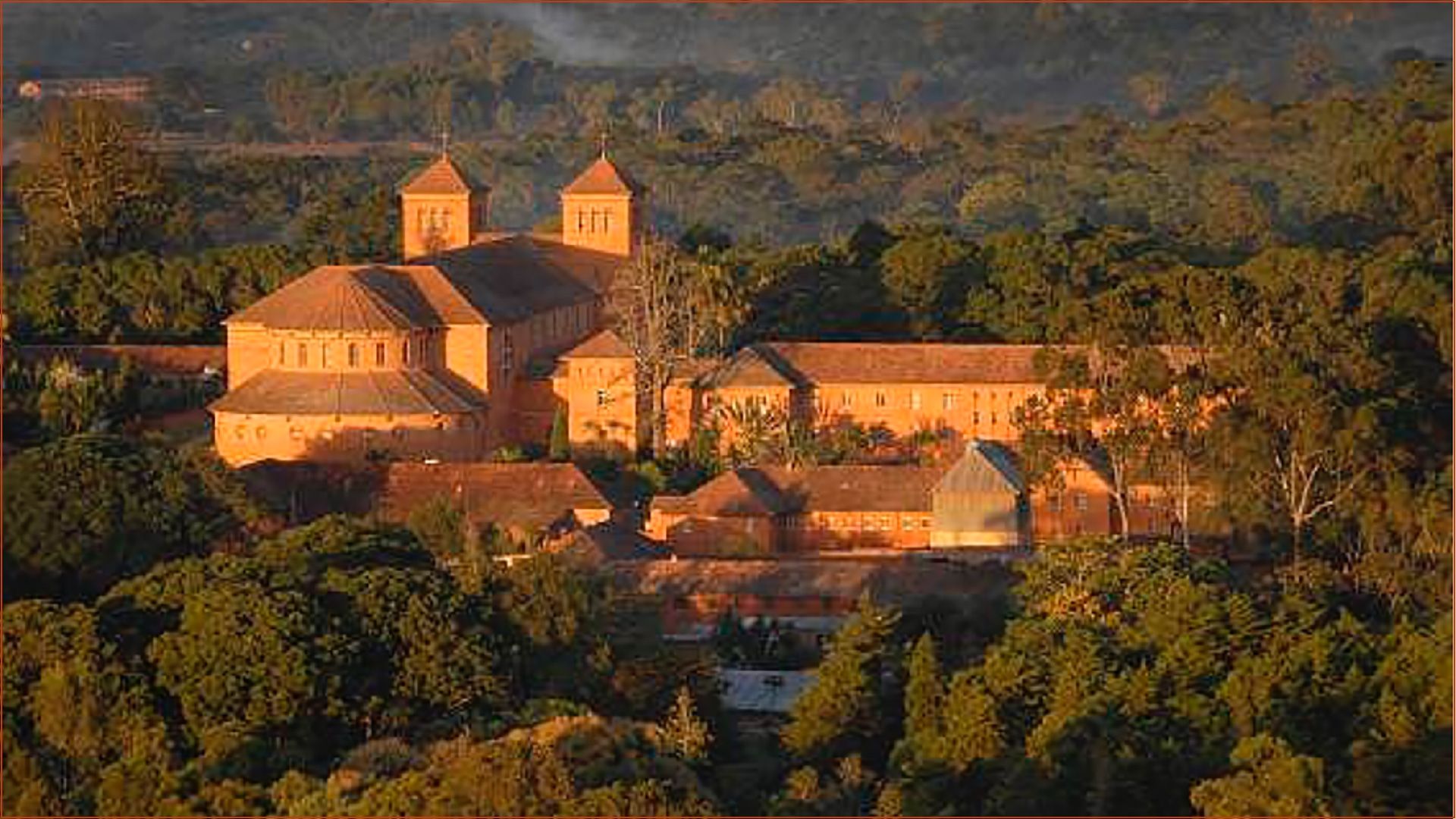
Brother Meinrad (Josef) Heinrich OSB passed away peacefully on 24 September 2019, in our infirmary where he has been for two years. When, in the late morning hours of 24 September 2019, the five bells of our abbey church announced the passing of Brother Meinrad from this world and his return home to our common Father, many people in the vicinity of the abbey were moved because Brother Meinrad was a well-known missionary, appreciated and loved by many. But first some basic data from his life before he left for the then mission territory of Peramiho in June 1958.
Brother Meinrad was born on 6 December 1934 in Illerberg, in the District of Ulm, of the Diocese of Augsburg. His parents were Michael Heinrich and Franziska, née Jehle, and he grew up with three siblings on a farm. To a certain extent, this peasant origin might explain his down-to-earth character, in spite of his later mobility in the mission, and the rootedness in his respective areas of work.
According to his own statements, the Christian example of his parents was the determining factor in his future religious and missionary vocation. After he entered the postulancy and novitiate of St. Ottilien (1952–1953), Brother Meinrad professed his temporary vows on 8 June 1954 and three years later, his perpetual vows, on 10 June 1957. Well-prepared for his future mission assignment by a solid vocational training in St. Gabriel Apprentices’ Home of St. Ottilien, especially under his mentors Brother Laurenz Braun and Brother Desiderius Bayerle, as a painter and a five-month language course in English at the English Benedictine Abbey of Buckfast, Brother Meinrad was sent as a missionary to Peramiho on 22 June 1958, arriving in July of the same year after a sea voyage of three weeks.
His entry into mission work was carried out in great silence, namely in the middle of the African bush some 55 km from Peramiho, where timber was being sawed under the direction of Brother Gislar Stumpf and with a large number of African workers. At the evening campfire, Brother Meinrad took his first tentative steps in the Kiswahili language, without a textbook, but rather through the lively discussions with the workers, before going to sleep in a thatched mud hut. Of course, this life in the solitude of the bush, so similar to the life of the founding missionaries of Peramiho some decades earlier, was not meant to last too long. In the coming years, we would find Brother Meinrad at a large number of mission stations, in all directions, within the widespread mission territory of Lake Nyasa at Lituhi, Lundu, Lupingu, and Lumbila. Here, under the direction of Brothers Mansuetus Mendler and Gabinus Gerig, he received further practical introduction into his future mission work not just for the production of bricks but also for the necessary masonry, joiner and carpentry work for the building and renovation of churches, residences, schools and dispensaries.
For all his moving from station to station, he still had a more or less stable seat at that time at the mission station of Luilo where he worked for ten years, from 1959 to 1969, and the head of the station there, Father Hadrian Schär, decisively shaped his spiritual and missionary life. Highlights of his work at that time were the renovation of the large church of Lituhi and later the abbey church of Peramiho itself, which with a new hue to the church walls, with his paintings on the glass windows and mainly with the entire redesign of the interior, had the effect of a new church. Over time, Peramiho became his permanent location with a well-equipped paint shop and a large number of workers. It would be too much to mention the names of all the stations where the traces of the activity of Brother Meinrad and his coworkers are still to be found today.
In his whole rhythm of work, Brother Meinrad never seemed nervous or harried. Before beginning to work, he would duly lay out the necessary explanations and pointers for the workers. But it also must be said that Brother Meinrad was a very communicative person, in the best sense of the word. It must be emphasized that the calmness and composure that Brother Meinard radiated would create a good working atmosphere for his workers. In any case, his workers usually continued working during his absence or without his supervision; this was not the case in all workshops. Perhaps Brother Meinrad, despite some criticism, showed good pedagogical skill. His active painting career earned him the nickname “Paintbrush Joe”, which was more an expression of praise than criticism.
Besides painting, his artistic interests included music. He cleaned and tuned the two organs in the abbey church and the cathedral in Songea on a regular basis. He was well prepared for this by working several months in the organ building company of Hubert Sandner in Dillingen, on the Danube, during home leave. But he not only repaired organs. He himself liked to play the organ, and his playing style, especially accompanying the chant, was quite pleasing in spite of a severe handicap in his right hand that was due to an accident in the kitchen at St. Ottilien during his training there, when three fingers of his right hand were literally torn off at the same time. He gained the local nickname “Bruder Madole” in Kiswahili, literally translated as “Brother of Fingers”, likely due to his missing some fingers.
Brother Meinrad also was interested in poetry and song. From time to time, he tried to liven up our community celebrations with poems he wrote in Kiswahili. For all his artistic abilities, however, Brother Meinrad’s main interest was the proclamation of the message of faith. In the absence of a priest, he was always ready at any time to give catechesis and homilies to the assembled Christians at the individual mission stations. For the centennial anniversary of the founding of Peramiho in 1998, which had great resonance across many parts of Tanzania, Brother Meinrad and Father Gerold Rupper OSB took part in a panel discussion in Dar es Salaam, in the presence of Cardinal Pengo, and answered questions about the history of Peramiho. After all, Brother Meinrad was no stranger to Dar es Salaam, as only a short time before, he had thoroughly renovated the cathedral built by us Benedictine Missionaries in 1901–1902.
The last years of his life were a time of suffering for our fun-loving and active Brother Meinrad. His memory became more and more blurred. Since he bore his suffering with great adherence to the will of God, this period of suffering became a testimony to his lived faith, perhaps no less than his impressive public activity in service to the young African Church. His suffering was certainly lessened by the loving care and concern that he received from the local doctors, sisters and nurses as well as our young African confreres.
May the Lord reward his faithful service to our community with everlasting joy. He died at the age of 85 years, with 65 years in religious life and 61 years as a missionary in Tanzania.
The Eucharist celebration was celebrated on Friday, 27 September 2019 at 11:00 a.m (East African Time), in the church of Peramiho Abbey, with burial following in our monastery cemetery. We ask for a remembrance in prayer for our beloved Brother Meinrad.
Father Sylvanus Kessy OSB (Prior Administrator) and the monastic community of Peramiho.


